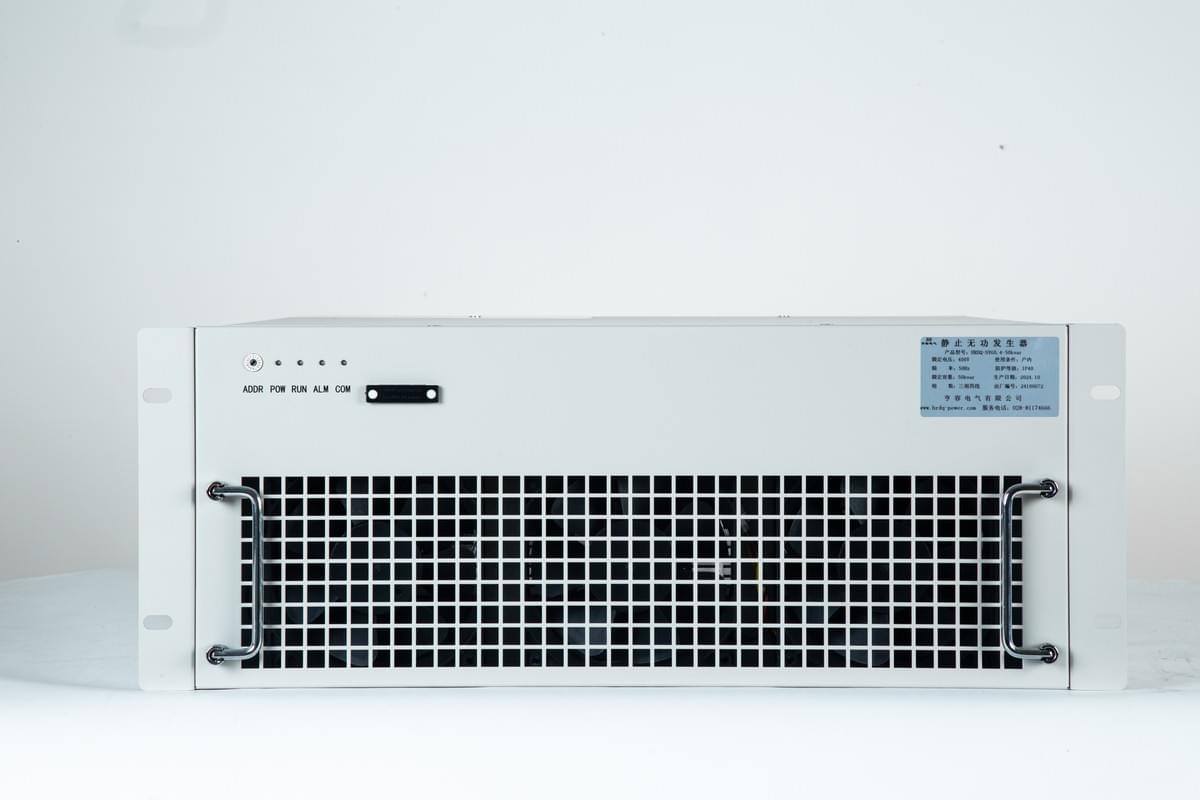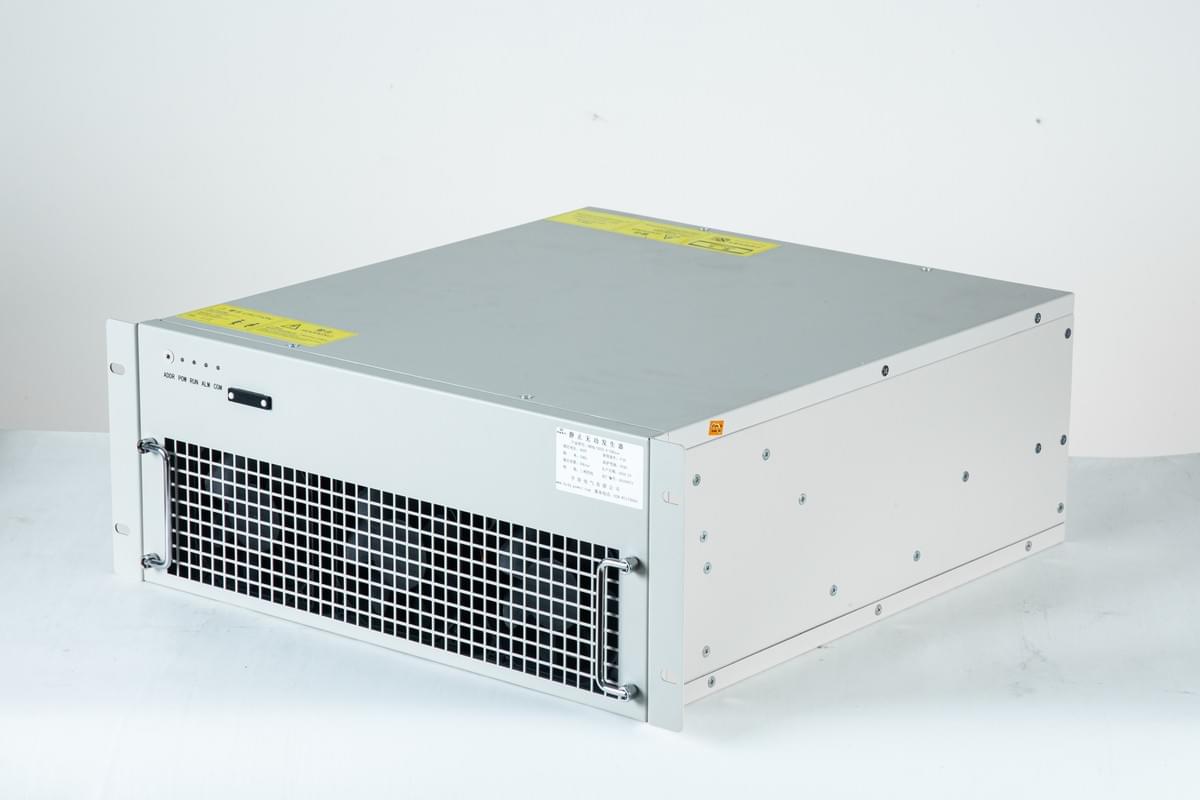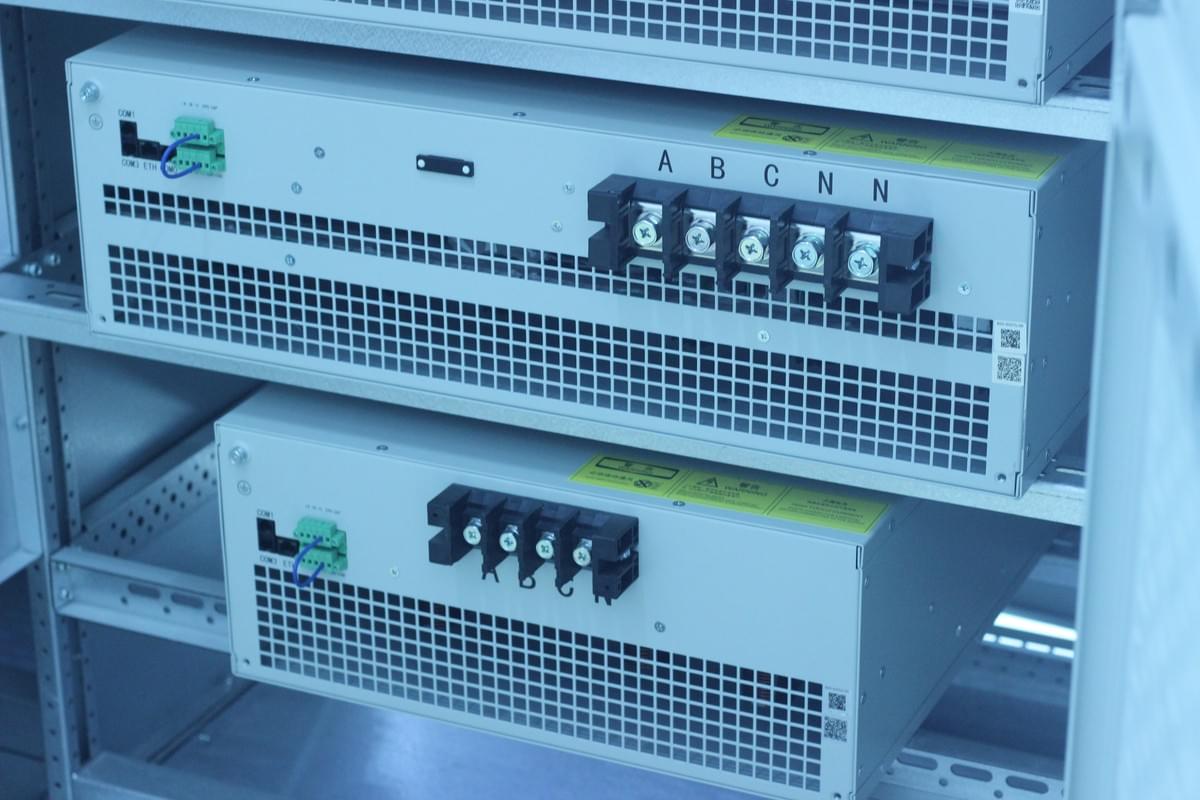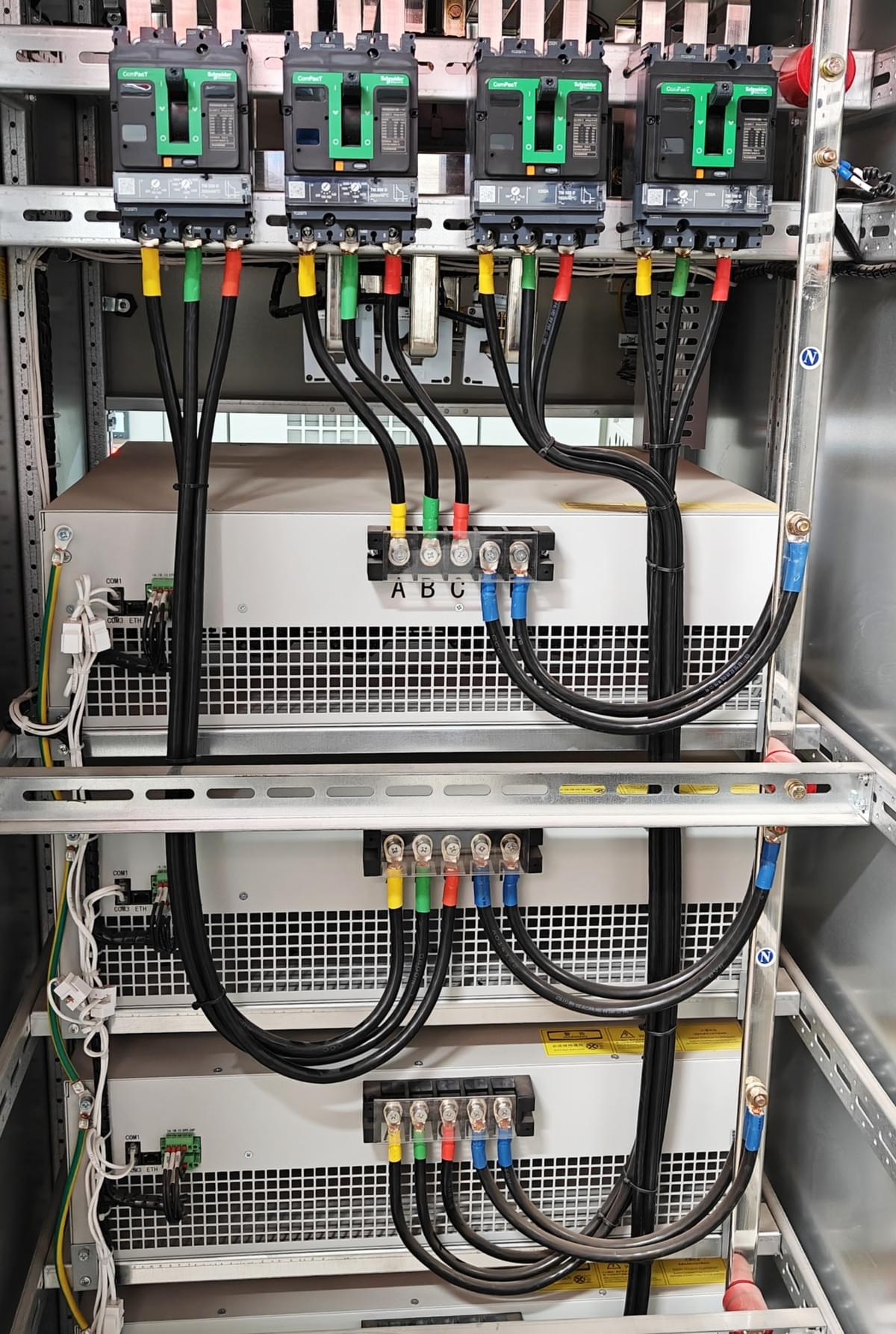In coal mine production, equipment such as thyristor traction devices and large-scale transformers generates a large number of nonlinear loads. The harmonic current can reach thousands of amperes, resulting in a grid current distortion rate exceeding 50%. This not only causes overheating loss and shortened service life of equipment, but also easily triggers misoperation of the protection system, posing potential safety hazards. As a core device for harmonic control, an APF (Active Power Filter) can control the grid-side current distortion rate to within 5%, and its performance depends on the design of its core parameters. This article focuses on the two key parameters of APF DC bus voltage and input reactor, and analyzes the optimization logic combined with simulation and experimental data to provide a reference for the stable operation of coal mine power grids.

1. Understanding the Basics of APF: Topology and Core Components
In industrial scenarios, the two-level shunt APF is widely used. Its structure takes a three-phase AC power supply as the input, connects the power grid and nonlinear loads through an input reactor, uses a DC-side capacitor for energy storage, and a high-pass filter capacitor for auxiliary filtering. Cooperating with the bridge arm composed of power switching devices, it realizes the accurate cancellation of harmonic currents.
From the perspective of working relationships, the operation of APF must satisfy two core logics: 1. The product of the change rate of the three-phase compensation current output by APF and the input reactor is directly related to the corrected value of the bridge arm switching state, the DC bus voltage, and the grid electromotive force; 2. The product of the DC-side capacitor and the change rate of the DC bus voltage depends on the correlation between the switching state of each phase bridge arm and the corresponding phase current. Among them, the input reactor determines the tracking speed of APF for harmonics, the DC bus voltage provides "energy support" for the compensation current, and the DC-side capacitor is used to balance voltage fluctuations, taking into account both operational stability and equipment cost.
2. Key Parameter 1 of APF: The Impact of DC Bus Voltage on Compensation
The DC bus voltage of APF is the "energy foundation" for the output of compensation current, which directly affects the current tracking speed and harmonic cancellation accuracy. Through the comparison of simulation and experiment, its impact on APF performance can be clearly seen:
2.1 The Balance Relationship Between Voltage and Tracking Speed
Under the condition that the grid voltage and the value of the input reactor are fixed, the current change capacity of APF increases with the increase of the DC bus voltage: when the voltage is 1020V, it only takes 4 sampling cycles for the current to fully track the harmonic command; when the voltage drops to 720V, the tracking time is extended to 5 sampling cycles. However, it should be noted that excessively high voltage will lead to an increase in the current overshoot, which in turn causes instantaneous fluctuations in the power grid and undermines the compensation stability of APF.
2.2 Verification of the Optimal Voltage Range
To determine the optimal operating voltage of APF, we set both the sampling frequency and switching frequency of APF to 12.5kHz, the input reactor to 1.5mH, and the grid voltage to 360V. We tested the compensation effect on 6k±1 - order characteristic harmonics (5th, 7th, 11th, etc.) under different voltages:
- 650V: The total distortion rate is 3.88%, and the distortion rates of the 5th, 7th, and 11th harmonics are 1.52%, 1.41%, and 1.42% respectively;
- 720V: The total distortion rate is 3.58%, the distortion rate of each harmonic is less than 1.3%, and the grid current (per unit value) drops to 0.6156, showing the best compensation effect;
- 790V: The total distortion rate rises back to 3.74%, and some harmonic components rebound.
It can be seen from this that around 720V is the optimal range for APF to balance the current tracking speed and compensation accuracy, which can accurately adapt to the control needs of 6k±1-order characteristic harmonics in the coal mine power grid.

3. Key Parameter 2 of APF: Key Points for the Selection of the Input Reactor
The input reactor of APF is equivalent to a "current buffer", whose core function is to suppress the ripple of the compensation current and stabilize the current change rate. Improper selection will directly affect the performance of APF:
3.1 The Two-Way Impact of Reactor Value on APF
It can be derived from the main circuit relationship of APF that the input reactor is inversely proportional to the current change rate:
- Too small (1mH): APF has a fast tracking speed for sudden harmonic currents (only 3 unit cycles are needed), but the current ripple increases significantly, and the high-frequency components in the frequency spectrum increase, resulting in a decrease in the "purity" of the compensation current;
- Too large (3mH): Although it can effectively filter out high-frequency ripples and the tracking effect in the non-sudden area is stable, the response ability to sudden currents is weakened, and the current is prone to "cat ear" peaks, resulting in poor dynamic compensation performance;
- 1.5mH: It can balance the advantages of fast tracking and low ripple. After compensation, the total distortion rate of the grid current is only 3.42%, and there are no obvious peaks, making it the optimal selection.
3.2 Optimization of Selection Method: Average Voltage Value Method
Traditional reactor selection methods (such as the coordinate transformation method and the highest harmonic determination method) are mostly designed for a single harmonic, ignoring the comprehensive compensation needs of multi-frequency harmonics. Based on the "minimum voltage value method", we propose the "average voltage value method". Combining the load current change rate (maximum value is about 7.0) and APF working parameters, we obtain the selection relationship: the reactor value should be less than or equal to the ratio of "4 times the DC bus voltage" to the product of "9 times the load current change rate, the ratio of 2 times the square root of 3 to π, the grid angular frequency, and the product of the square root of 3/2 and the load current".
When the DC bus voltage is 720V and the APF compensation current is 20A (corresponding to a load current of about 66.7A), the calculated reactor value is approximately 1.5mH, which is completely consistent with the simulation results and can adapt to the complex load scenario of coal mines.

4. Experimental Verification: The Practical Effect of APF Parameter Optimization
To verify the conclusion of parameter optimization, we built a coal mine power grid simulation experimental platform: the three - phase grid voltage is 380V, the APF - side reactor is 1.5mH, the DC bus voltage is 720V, the sampling/switching frequency is 12.5kHz, an 8Ω resistor is used to simulate the nonlinear load, and TMS320X2812 DSP is used as the control core. Data is collected through LEM sensors and FLUKE harmonic analyzers:
4.1 Conventional Compensation: Significant Reduction in Distortion Rate
When APF is switched on and off under uncontrolled rectification, the data shows that: when APF is not put into use, the grid current distortion rate reaches 25%; after it is put into operation, the rate drops to 3.9%, and the current waveform is smooth without obvious fluctuations, showing a significant harmonic cancellation effect.
4.2 Sudden Load Change: Stable Dynamic Response
When simulating the sudden load change scenario in coal mines (sudden load increase: resistance from 16Ω to 8Ω; sudden load decrease: resistance from 8Ω to 16Ω), the results show that the system response time of APF is less than 20ms (1 power frequency cycle), the DC bus voltage is stable without obvious drop or overshoot, and it can adapt to the demand of frequent start - up and shutdown of coal mine equipment.
5. Conclusion: APF Parameter Optimization Safeguards the Coal Mine Power Grid
APF is a core device for harmonic control and reactive power compensation in coal mine power grids. The key to its performance optimization lies in the accurate control of two core parameters: 1. The DC bus voltage is selected as 720V to balance the current tracking speed and compensation accuracy; 2. The input reactor is 1.5mH to take into account both dynamic response and ripple suppression. After optimization, APF can control the grid current distortion rate within 4% and the dynamic response time within 20ms, which fully meets the safety production needs of coal mines.
In the future, with the increase in the power of coal mine equipment, the topology and control strategy of APF will continue to be upgraded, but the optimization of core parameters will still be the basis for improving performance. We will continue to deepen the research and development of APF technology and provide more efficient and reliable power grid governance solutions for the coal mine and other industrial fields.

Want to keep your coal mine power grid's current distortion rate stable at less than 4%? Leave a message with your device specifications and project scenario to receive an APF selection guide and exclusive partnership solutions. Hengrong Electric CO., LTD. helps power grids operate safely and efficiently!
